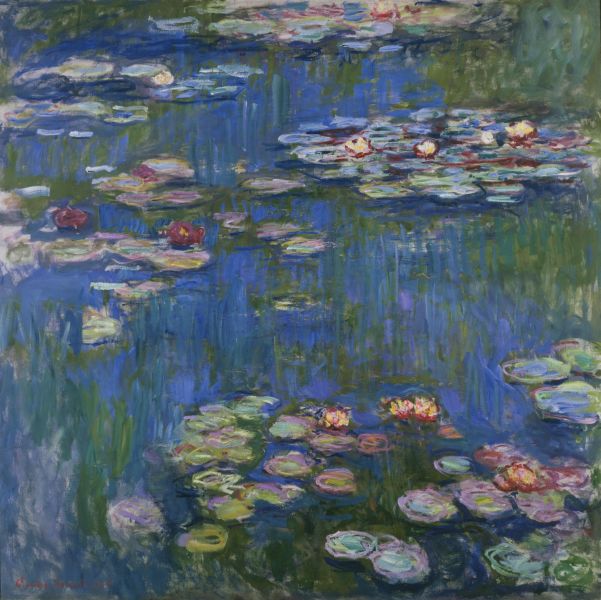Inviting meadows, serene ponds and idle women relaxing in reverie are all images that were caught by the deft hand and delicate impressions from one of France's most renowned painters, Claude Monet. Born in Paris, France on November 14, 1840, Monet was destined to become a Master Painter. By the age of five, his family moved to Le Havre, where he began to show interest in the arts. While his father encouraged the young Monet to go into business, his mother supported his artistic endeavors, so by the time he entered secondary school he was already well versed in drawing caricatures of his fellow students and teachers. With lessons in drawing, from Jacques-Françoise Ochard, his skills further developed, setting him firmly on the path of the life of an artist.
Always preferring to be outdoors, when the young artist met Eugène Boudin in 1856/7 it proved to be providential. Boudin encouraged Monet to paint outdoors or "en plein air", and this style of painting stayed with him throughout his life. Boudin also introduced the use of oils into Monet's repertoire and soon landscapes began to appear in his paintings as well. While the death of his mother devastated the young Monet in 1857, it also propelled him forward in his career. Shortly thereafter, he moved back to Paris and met the likes of Édouard Manet and Camille Pissarro, both of which were to become friends and influencers of his art.
Between 1861-2, Monet joined the military and served in Algiers. Due to poor health, he was discharged from service and returned to Paris, where he began studying under Charles Gleyre. It was during this time that he met Auguste Renoir, Alfred Sisley and Frederic Bazille, fellow painters that would prove to bring a new style of painting to the art world. With rapid brush strokes and a focus on lighting, which could often only be achieved by painting outdoors, these influential artists were to become the founders of the Impressionistic movement.
Long before the world hailed Monet as a Master Artist, he faced many struggles. While he gained a measure of fame when he had a few pieces selected by the Salons in Paris, a lack of financial stability and depression threatened to erase this budding artist. In 1870, he married Camille Doncieux, who had been a long-time model for many of his portraits. The outbreak of the Franco-Prussian war forced the newlyweds to flee to England, then the Netherlands, before returning to France in 1871. While his connections in the Impressionist movement grew, the health of his wife failed, and in 1879, Camille died of tuberculosis.
Monet was devastated by his wife's death, and vowed to never again live in poverty. He threw himself into his work, entering the most productive phase of his life. He continued to paint en pein air and created magnificent landscapes and still lifes of everything from haystacks to water lilies, some of which today are now worth into the millions of dollars. He made Vétheuil home for a number of years, until he discovered Giverny. It was in Giverny where he finally bought himself a property that allowed him the luxury of painting to his heart's content in his very own gardens long into his years. Despite failing health and vision, this prolific artist painted up to his death on December 5, 1926.
On Saturday April 14, at the London Farmer's Market, you too can be swept away by the light of this Impressionist painter. Claude Monet will be the featured Master Artist in the first session of
Budding Artists third Master Series Art Workshops for children. Register your child now for either the 10:30 am or 1pm workshop and expect them to have fun exploring art history, games and of course artistry, as they create their own masterpiece to take home with them. See you then!





No comments:
Post a Comment